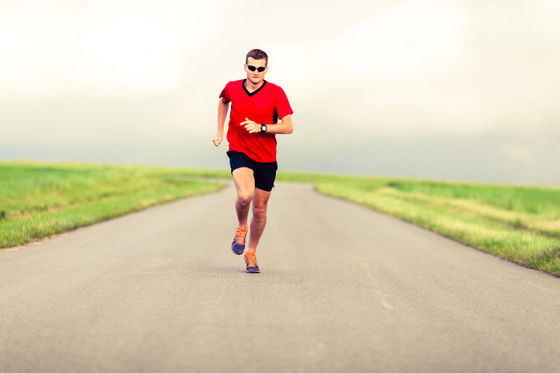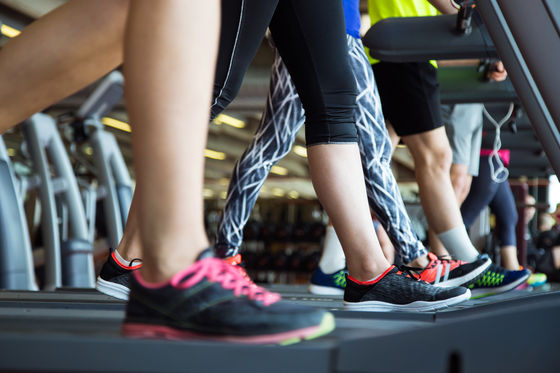'Moderate exercise' is important to build a virus-resistant body, and overexercising is rather counterproductive

The new coronavirus infection (COVID-19) is, but you have rampant worldwide, prospect that COVID-19 therapeutic agent is developed is not standing, themselves can treat COVID-19 at this stage It can be said that it is only the body of. Tamara Hubutler and Marian Fallman, who study exercise and sports science at Wayne State University in the United States, explain the series of research results that ' it is not good to have too much or too little exercise ' I will.
Mucosal IgA and URTI in American College Football Players: A ...: Medicine & Science in Sports & Exercise
Thieme E-Journals-Sports Medicine International Open / Abstract
https://www.thieme-connect.de/products/ejournals/abstract/10.1055/s-0043-119090
Should I exercise during the coronavirus pandemic? Experts explain the just right exercise curve
https://theconversation.com/should-i-exercise-during-the-coronavirus-pandemic-experts-explain-the-just-right-exercise-curve-133861
Hugh Butler and Fallman argue that 'too much or too little momentum is not good,' and Hugh Butler and colleagues cite several studies that show this conclusion.
A research team at the University of Hong Kong analyzed 24,656 deaths from the H3N2 subtype influenza epidemic in Hong Kong in 1998 and analyzed the risk of natural death, cardiovascular disease, respiratory disease related to influenza from exercise habits We have published a study to classify. According to this study, mortality was 5.8% -8.5% higher than the norm in the group `` exercises rarely (less than once a month), '' and `` exercise low to moderate (from once a month to three times a week). The mortality rate was 4.2% to 6.4% lower than the standard value in the group 'execution time', and the mortality rate was similar in the group 'exercise frequently (4 times a week or more)'. This led the research team to conclude, 'Compared to' rare exercise ',' exercising at low to moderate frequency 'reduces the mortality rate of influenza.'
Similar results were shown in a study of a joint team at the University of Arizona and the University of Bath. According to the study, systemic reactions to infectious agents and mucosal immune responses in the respiratory tract were examined, and the effect of exercise on the body's immune system was 'too much or too little exercise' It was said that the J-curve effect indicating was shown.
Experiments with mice gave the same results. A research team at the Illinois State University conducted an experiment in which mice infected with influenza were exercised regularly until they became ill, and investigated the amount of exercise and the survival of mice. As a result, the mortality rate of mice that exercised moderately for 20 to 30 minutes a day was 18%, but the mortality rate of mice that did not exercise was 57%, 2.5 hours a day. Mortality in exercised mice reached 70%.

As mentioned above, several research results point out the result that 'it is not good to exercise too much or too little, and to exercise moderately'. Hugh Butler and colleagues are also focusing on the protein ' secretory
Surveys of football and cross-country players were conducted separately. A study of football players found that subjects had the most prominent symptoms of acute upper respiratory tract inflammation (cold syndrome) when the secretory immunoglobulin A levels in the body were lowest. 'But when it comes to immunity, it's not always good to increase exercise,' Hubotler et al. Conclude, because in both studies, secretory immunoglobulin A levels decline when overexercised.
The following are guidelines for 'exercise during a pandemic', which were derived by Mr. Hugh Butler and others.
・ The intensity is limited to mild to moderate (20 to 45 minutes), and the frequency is up to 3 times a week.
・ During the isolation period, try to “maintain” instead of strengthening muscle and physical strength
-When performing team sports, avoid physical contact to prevent the spread of infection.
・ Clean and disinfect sports equipment after use.
・ When using a gym, select a gym that is well ventilated and allows you to maintain a social distance from others.
・ Use social media to interact with your teammates, not offline.
・ Eat well and sleep to improve immunity.
・ Maintain an optimistic mood that “passing is far from over.”

In contrast, here's a list of 'don't dos':
・ Exercise that is too exhaustive. In one example, the risk of illness increases from 2.2% to 13% after a marathon race.
・ Exercise when you have flu-like symptoms.
・ Exercise more than 5 times a week
・ Exercise in a crowded closed space
・ Share drinks and tableware

In addition to 'that should not be' over, Hugh Butler and his colleagues referred to as 'not very wash away the body of toxins a large amount of moisture' of Wayne State University study cited, excess moisture at the time of the 'disease Please refrain from taking it. '
Related Posts:
in Science, Posted by darkhorse_log







